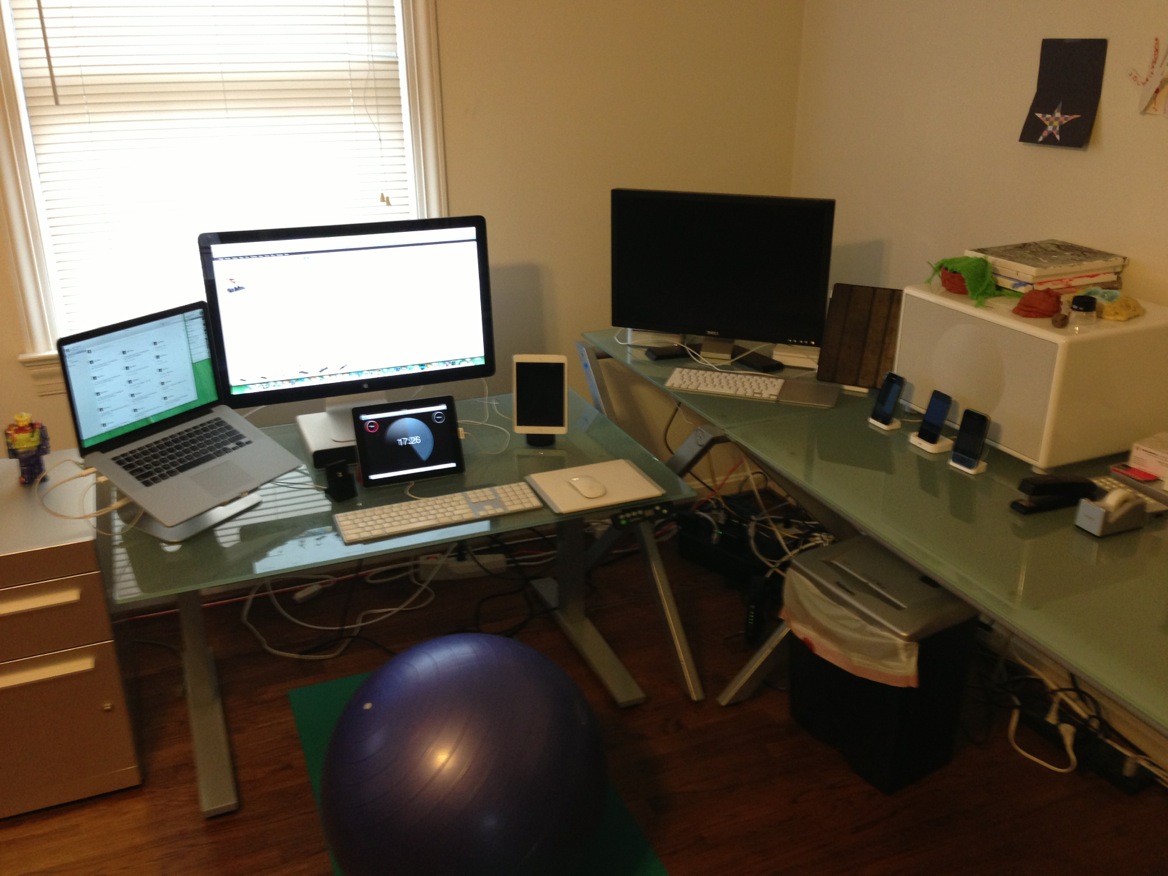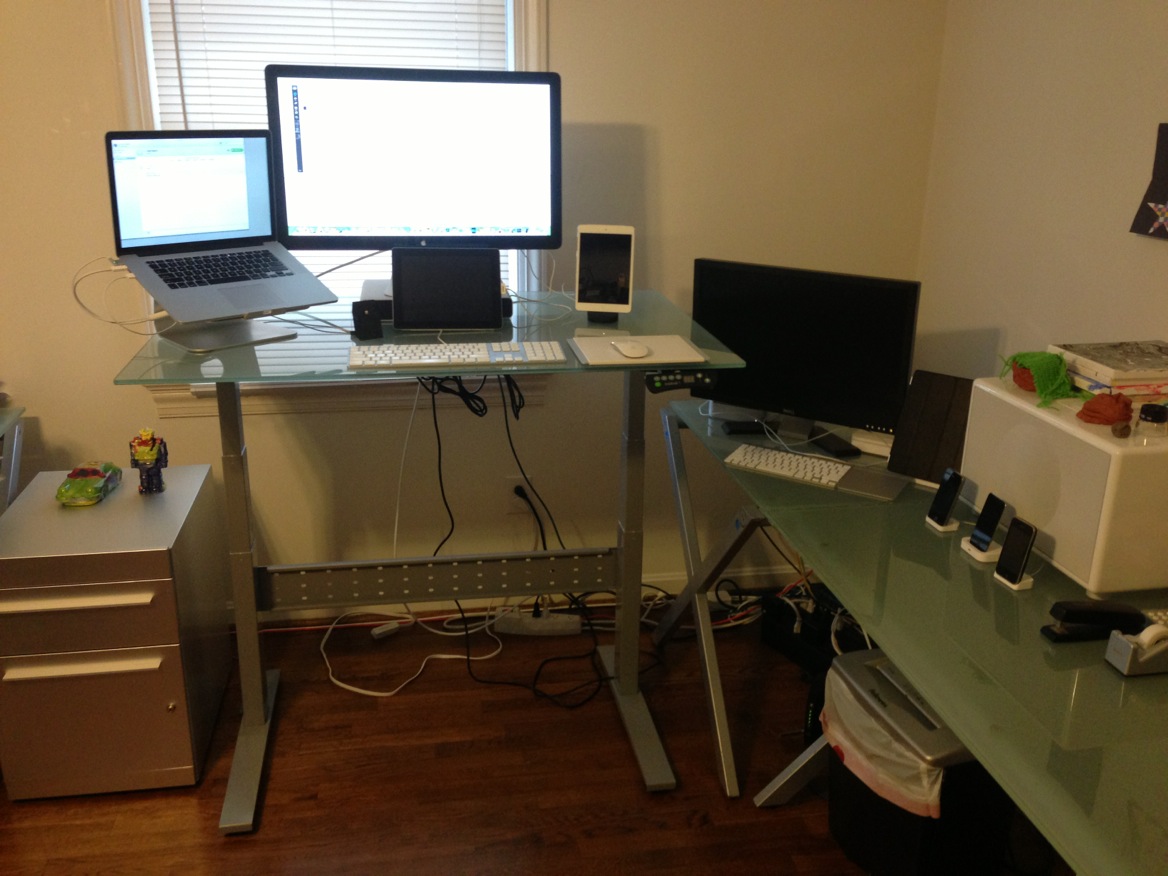 Early this year I purchased my first standing desk. Originally I was looking at treadmill desks as a way to help get in shape despite the long hours I spend at my desk each day. I didn’t feel like I had the time for a DIY project, so I was considering pre-built solutions such as this LifeSpan Fitness treadmill desk. Their desk seemed nice, but I had 2 problems with it. First it is fixed in height and so could never be used as a sitting desk, and second I already have 3 desks in my office that I like and the last thing I needed was a 4th desk.
Early this year I purchased my first standing desk. Originally I was looking at treadmill desks as a way to help get in shape despite the long hours I spend at my desk each day. I didn’t feel like I had the time for a DIY project, so I was considering pre-built solutions such as this LifeSpan Fitness treadmill desk. Their desk seemed nice, but I had 2 problems with it. First it is fixed in height and so could never be used as a sitting desk, and second I already have 3 desks in my office that I like and the last thing I needed was a 4th desk.
The other reason I was looking at treadmill desks was because sitting at my desk was becoming increasingly more uncomfortable. I’ve been programming professionally for 15 years and sitting long hours each day the entire time. Up until last year, I would only get sore after more than 10 or 12 hours of sitting. But this past year that dropped to 8 and then 6 and then 4 hours or even less. Changing positions and getting up for stretching breaks (which I do regularly) wasn’t helping much. Sitting at my desk had literally become (forgive the pun) a pain in the ass. Of course to address this problem I didn’t need a treadmill, just a standing desk. But I figured that standing all day would quickly become just as painful as sitting all day, so what I really needed was an adjustable desk. (LifeSpan and other companies also sell standing desk treadmills without the desk, so I could always add a treadmill later.)
So after some research I decided to get a GeekDesk without a top and reuse the existing glass top from one of my desks, and just swap out the existing frame for the GeekDesk one. I chose the more expensive Max version mainly for the programmable presets, and I chose a small frame to fit one of my two 120 cm desks (I could have gotten a large frame for my 160 cm desk). Using my own top saved me $264 between reduced price and reduced shipping.
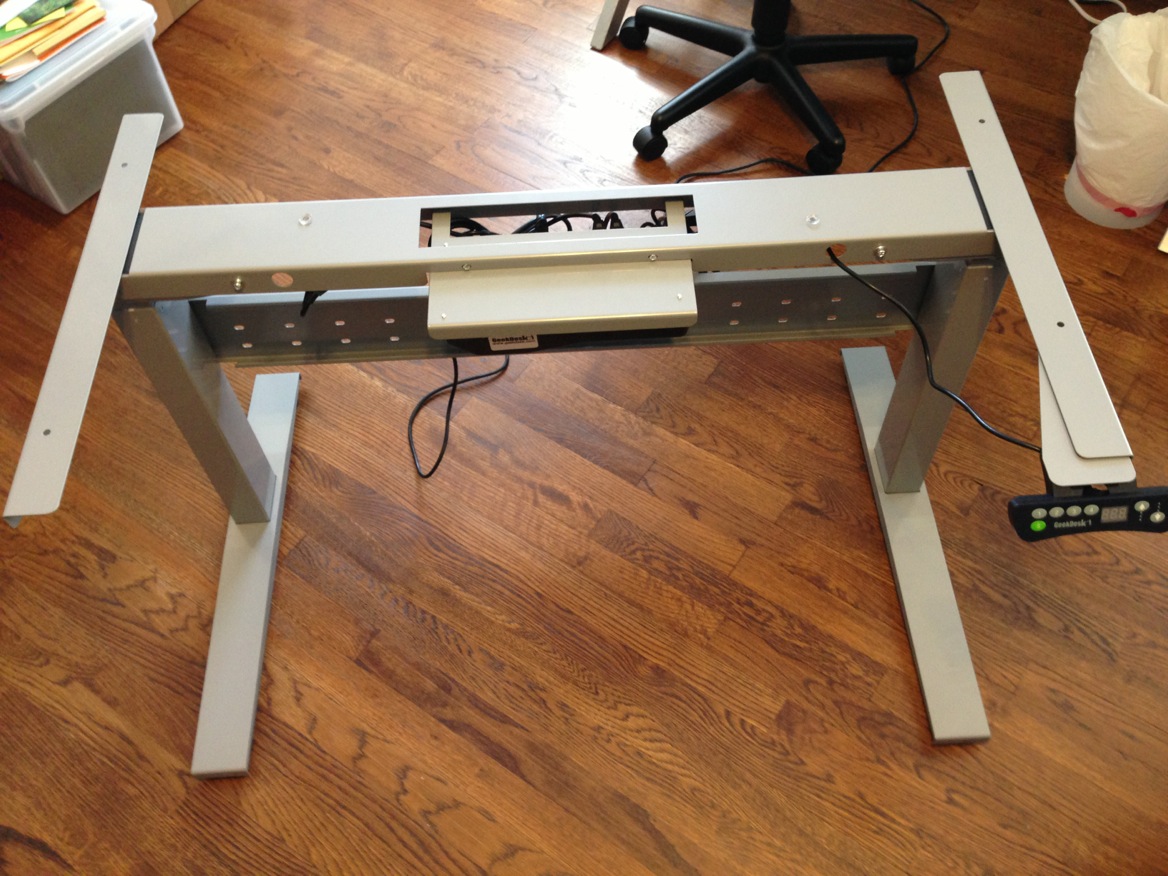 Customer service at GeekDesk was great and my desk arrived promptly. You assemble it yourself, but that’s easy and the build quality is great. Adding your own glass top is probably even easier than adding your own wood top because you can assemble the desk upright and merely set the glass top in place. The one thing you need are little rubber / silicone pads to put in between the metal frame and the glass top. These cushion the top but also provide the necessary friction so that the top will not slide sideways with pressure. Fortunately I already had these from my previous desk frame.
Customer service at GeekDesk was great and my desk arrived promptly. You assemble it yourself, but that’s easy and the build quality is great. Adding your own glass top is probably even easier than adding your own wood top because you can assemble the desk upright and merely set the glass top in place. The one thing you need are little rubber / silicone pads to put in between the metal frame and the glass top. These cushion the top but also provide the necessary friction so that the top will not slide sideways with pressure. Fortunately I already had these from my previous desk frame.
When the desk is in seated position the before (above) and after (below) appearance is practically unchanged.
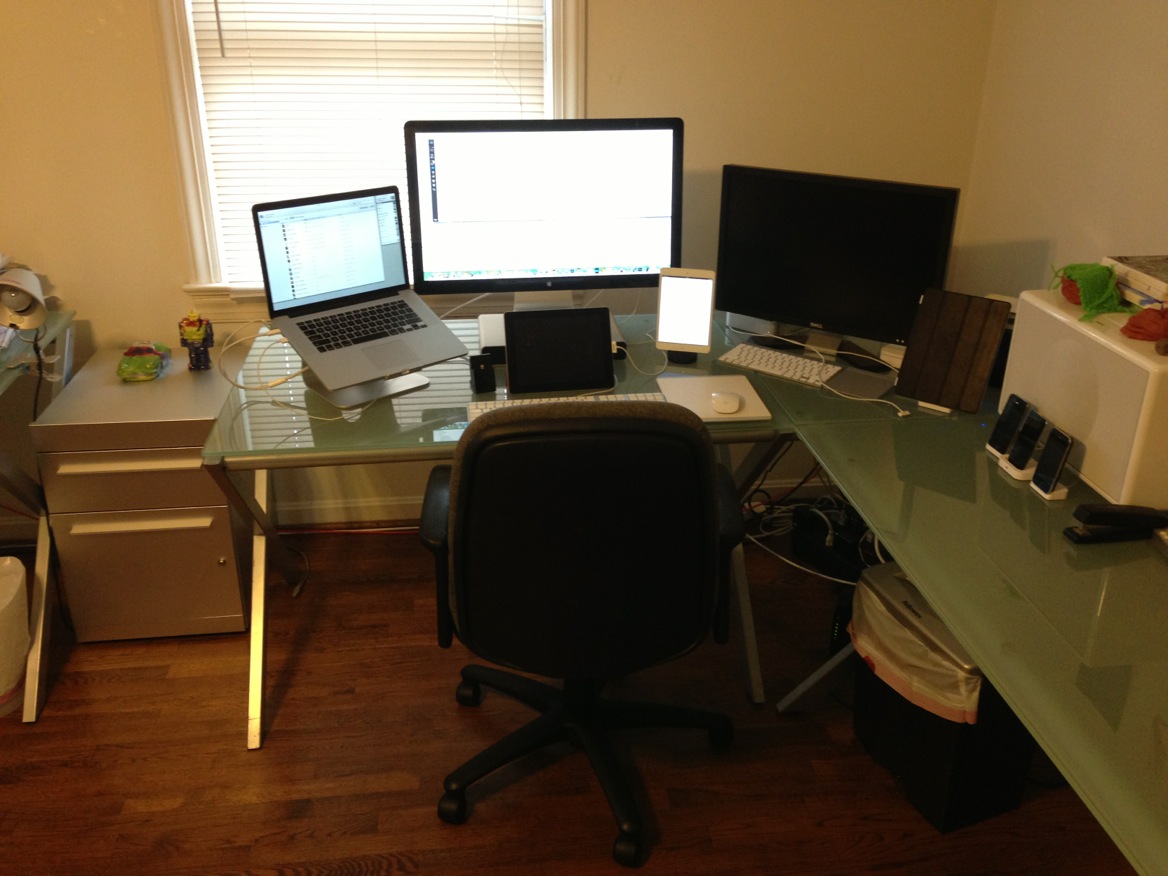
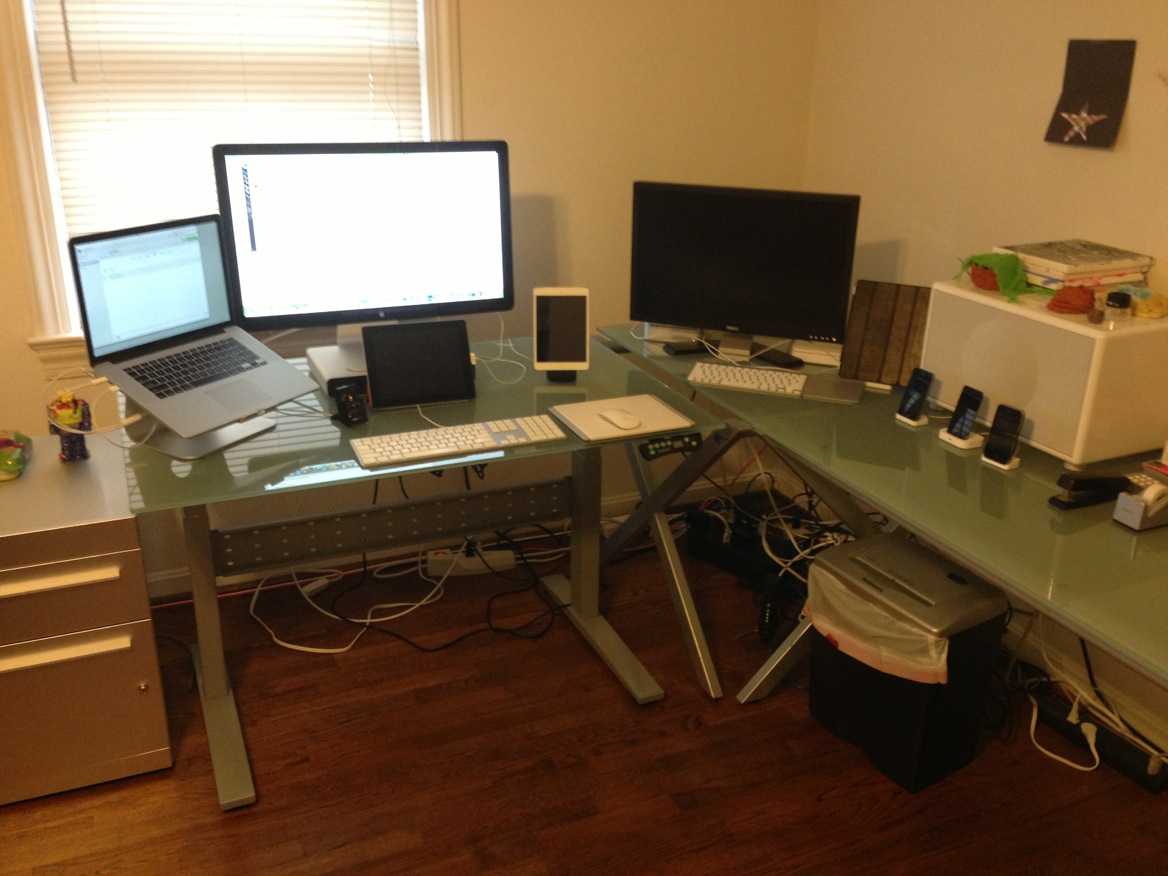
In Use
At first, I was changing positions every 30 minutes using a timer to remind me. I rotated between 3 positions: sitting in a chair, standing, and sitting on a balance ball (with the desk in its lowest position). Changing so frequently was no doubt overkill and most of the time I had trouble focusing properly while standing. Working while sitting is a hard habit to break. 9 months later I still sit most of the day, but once or twice a day I will move the desk into standing position and stand for a while. I probably ought to change more often. I still find it hard to concentrate while standing, so whenever I’m faced with a particularly difficult problem to solve, I always have an urge to sit. Overall I’m very happy with the purchase and glad I have the option to shift my work position upon demand. Maybe next year will be the year I am able to add a treadmill into the mix.
